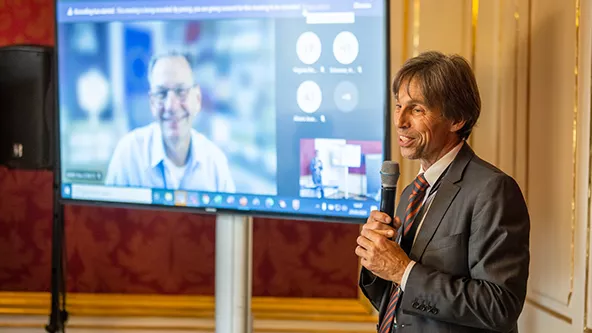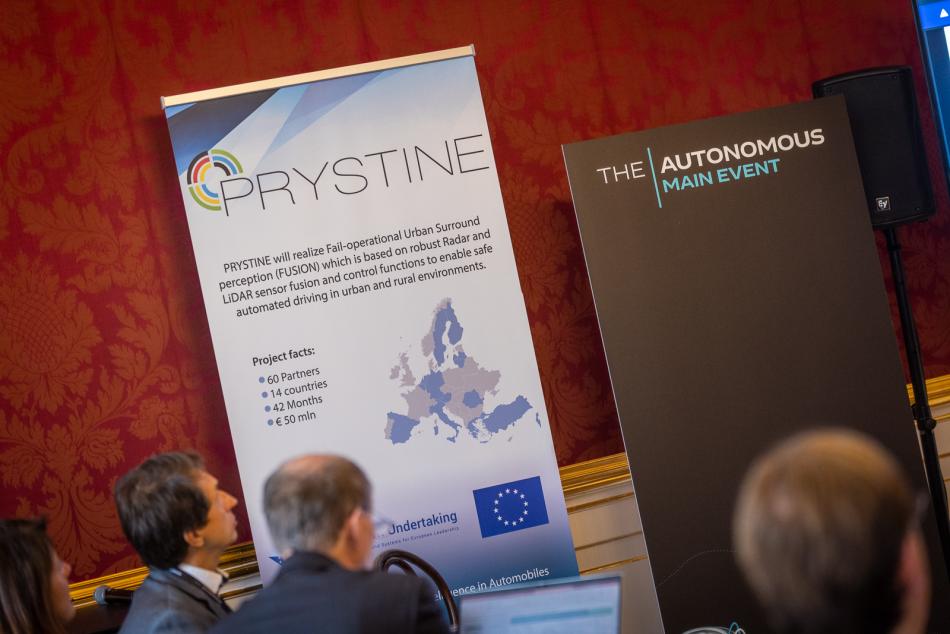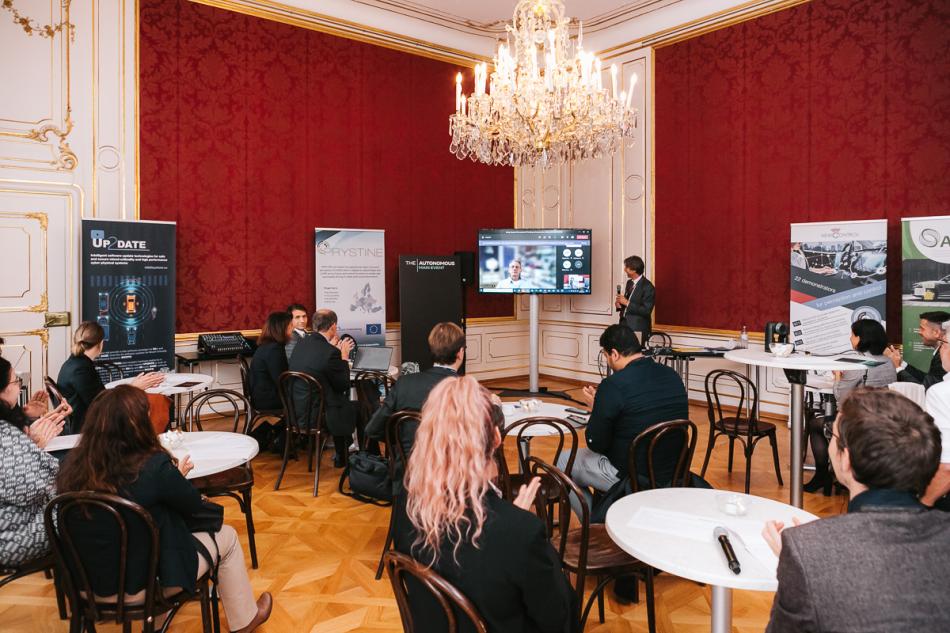
At “The Autonomous” event in Vienna, an international group of experts discussed how EC funding contributes to tackling the biggest safety challenges in autonomous mobility.

In September 2021, Europe’s autonomous driving ecosystem came together at the marvelous Viennese Hofburg Imperial Palace for “The Autonomous” main event. Their goal: to unite the world’s major mobility stakeholders and shape the future of safe automated driving. While big names in business, policy and tech gave panels and keynotes on the main stage, a no less significant group of stakeholders gathered in a more intimate setting to discuss the successful completion of three EU-funded research projects in automated mobility.

The workshop was titled “Safety, Research & Innovation: How EC funding contributes to tackling the biggest safety challenges in autonomous mobility”. It was hosted by TTTech’s Innovation Projects and Funding Management team and included guest speakers like Dr. Max Lemke of the European Commission, Prof. Dr. George Dimitrakopoulos of Infineon Technologies, Dr. Stephane Dreher of ERTICO, or Dr. Irune Agirre of IKERLAN, next to TTTech’s own Dr. Anna Ryabokon.
The following three projects were presented at the workshop:
PRYSTINE[1]: The aim of the EC ECSEL Joint Undertaking project PRYSTINE (submitted in 2017) was to realize Fail-operational Urban Surround Perception (FUSION), to enable safe automated driving in both urban and rural environments. As part of the project, a fail-operational architecture for Level 3+ highly automated driving was developed by TTTech Auto and Infineon. The project received funding by the European Commission’s ECSEL Joint Undertaking, as well as the national governments of the ECSEL member states.
UP2DATE[2]: The aim of the project UP2DATE (submitted in 2019 under the H2020-ICT-2018-2020 call “Information and Communication Technologies”) was to provide new software paradigms for safe and secure software updates in the automotive and rail sectors. These will make over-the-air software updates safer and more secure. The project was funded by the EU’s H2020 scheme.
NewControl[3]: The main goal of the EC ECSEL Joint Undertaking project NewControl (submitted in 2018) was to deliver fail-operational holistic virtualized platforms for vehicular subsystems that are critical to automated driving. The project’s innovations aim to improve the market penetration of safety-centrical automation systems, contributing directly to the European goal of zero road fatalities by 2050.

These results of “The Autonomous” main event and its workshops show that an international cooperation on safe, automated mobility, as it is pursued by the initiative, has become reality. This cooperation includes international players of any size and kind in the automotive ecosystem, be it huge OEMs, chip manufacturers, suppliers, and many more. They demonstrate that it is of the utmost importance to join forces to develop all required technologies and to test, validate and verify them. The goal is a safe, secure, and reliable solution for green, smart mobility engaging highly automated driving as a central element.

“EU funding plays an essential role in Europe’s innovation process,” Andreas Eckel, Team Leader Innovation Projects and Funding Management at TTTech, stated with conviction. “It strengthens European enterprises’ competitiveness concerning innovation and commercial aspects by fostering cooperation between businesses and academia.” According to Eckel, it also reduces the related risks, both financial and technical, and advances all partners’ positions at the forefront of innovation and technology leadership.
Photo credit: The Autonomous/Philip Lipiarski, 2021
Learn more:
Presentations for download:
- 1 Agenda Safety Research Innovation Workshop 29Sep21
- 2 Max Lemke Next Generation IoT And Car Operating Systems 29Sep21
- 3 George Dimitrakopoulos Anna Ryabokon PRYSTINE Key Safety Challenges And Results 29Sep21
- 4 Reiner John NewControl Sustainable Mobility By Seamless Digitalization 29Sep21
- 5 Irune Agirre UP2DATE 29Sep21
- 6 Stephane Dreher Next Steps For RI And International Cooperation In CCAM 29Sep21
[1] The project receives funding from European Commission ECSEL JU and the national funding agencies of the partner countries. In the case of Austria, the Austrian Project Partners receive funding from the Österreichische Forschungsförderungsgesellschaft mbH.
[2] UP2DATE receives funding from the European Union Horizon 2020 Research and Innovation program under the grant agreement No 871465.
[3] The project receives funding from European Commission ECSEL JU and the national funding agencies of the partner countries. In the case of Austria, the Austrian Project Partners receive funding from the Österreichische Forschungsförderungsgesellschaft mbH